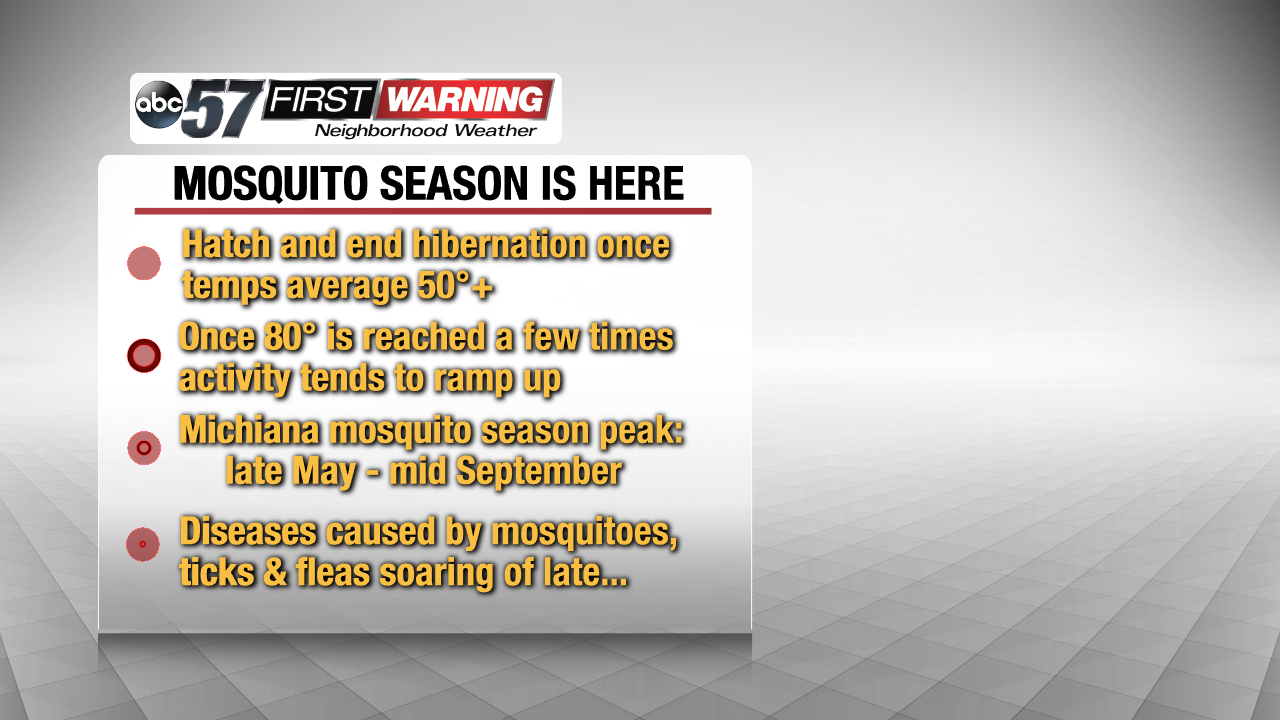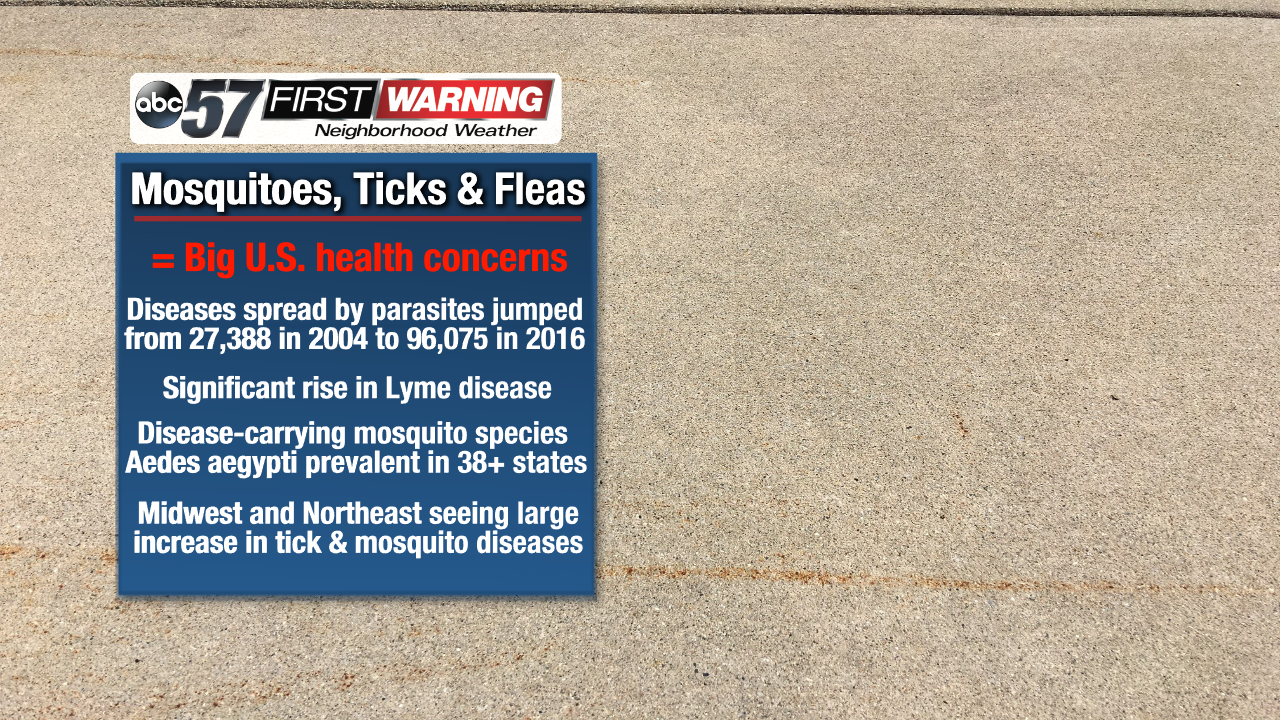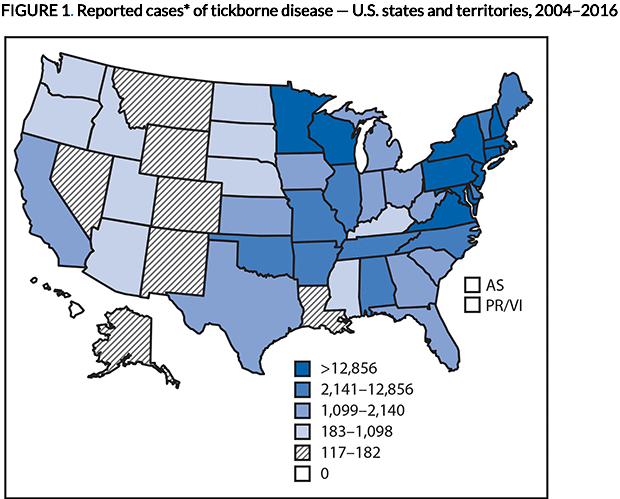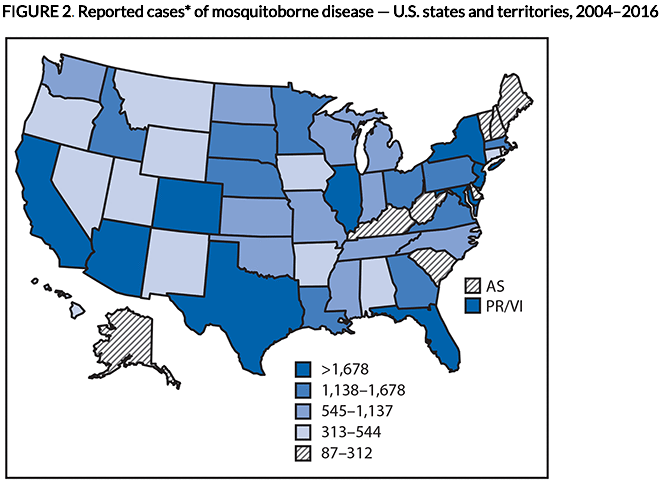Ticks, mosquitoes becoming big concern in Michiana
Posted: May 4, 2018 12:40 PM EST
Tick season is in full swing. Mosquito season isn't far behind. And, as temperatures and humidity continue to climb, so do the number of ticks, mosquitoes and fleas across Indiana and Michigan. Not only that, but a new report by the Centers for Disease Control and Prevention (CDC) highlights the alarming increase in illnesses spread by the parasites.
Between 2004 and 2016, cases of diseases spread by the three parasites increased from 27,388 to 96,075 in the United States. Those cases include tickborne diseases like Lyme disease, anaplasmosis, spotted fever, and babesiosis. Mosquitoborne diseases like Dengue viruses, Zika, West Nile Virus, and Malaria have also been on the increase year after year. Diseases caused by fleas are much less common, but there have been reports of the plague, a fleaborne disease.
The Northeast, Midwest and parts of the Southwest have seen the highest number of reported tickborne and mosquitoborne diseases since 2004. That includes both Indiana and Michigan. The highest total of tickborne diseases has been in Minnesota, Wisconsin and the Northeast states. The highest total of mosquitoborne diseases has occurred in neighboring Illinois, parts of the Northeast, Florida, Texas, California, Arizona, and Colorado.
For Indiana, between the years of 2004 and 2016, roughly one in every 3,500 people reported a tickborne disease. For mosquitoborne diseases, roughly one in every 7,000 people was affected in Indiana during that stretch. For Michigan, roughly one in every 5,000 people came down with a tickborne disease, and one in every 10,000 people suffered from a mosquitoborne illness.
The overall theme found is the fact that illnesses and diseases transmitted by ticks, mosquitoes and even fleas are rising each year. That trend could certainly continue in years to come. There are different reasons why this uptick may be occurring year after year, but one potential reason could be the changing climate. Warming temperatures and changing weather patterns are being thought of as possible reasons why the presence of ticks, mosquitoes and fleas is not only expanding, but becoming more concerning.
To protect yourself as much as possible this spring and summer, there are a handful of actions you can do, according to the CDC. They include, but are not limited to:
- Covering up
- Actively use insect repellents; reapply every 4 hours
- Clear brush and leaves from your yards
- Keep woodpiles in the sun
- Check yourself, your children and pets for ticks every day
- Use tweezers to remove ticks as soon as possible
- Apply ointments for bites as necessary


















